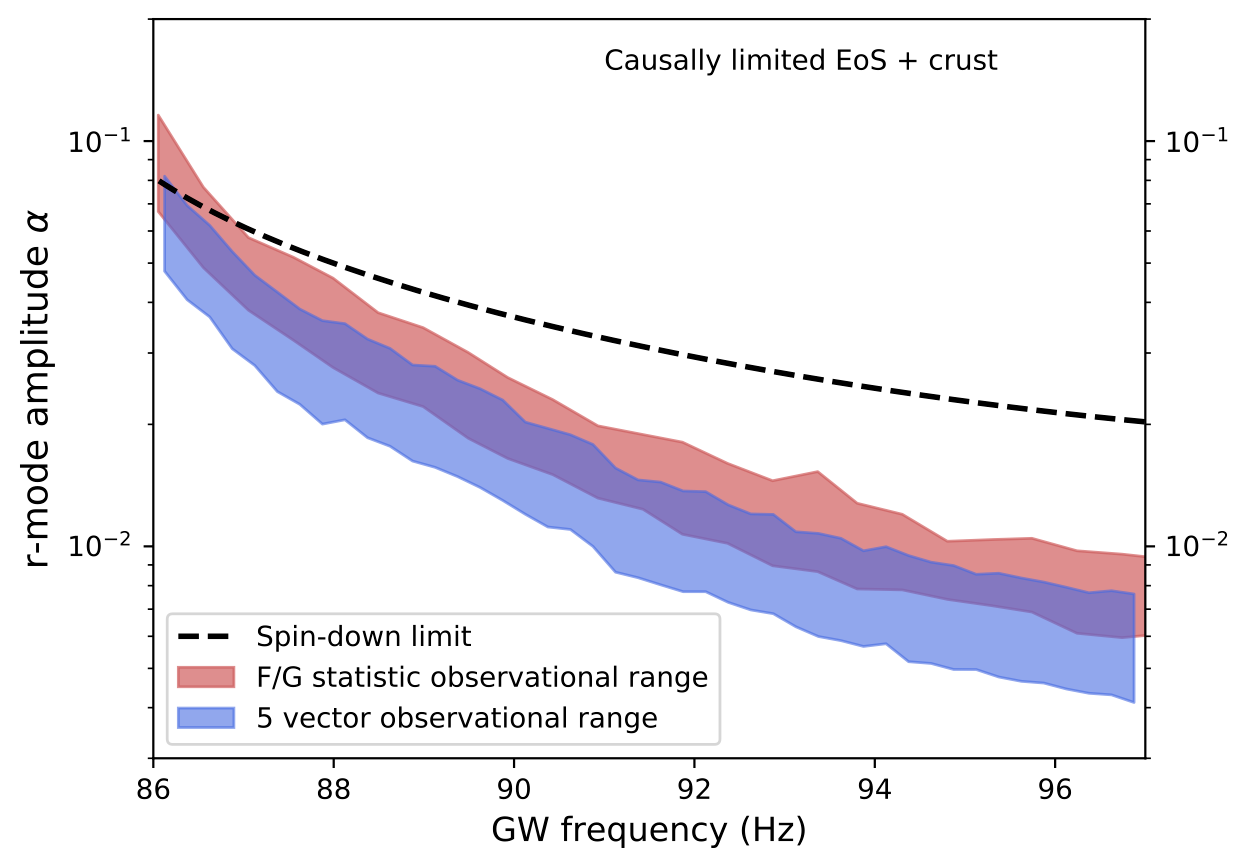NICER / ISS Science Nugget
for June 17, 2021
Limiting Pulsar Mountains
NICER regularly observes the pulsar PSR J0537-6910, which rotates at a
rate of 62 times per second and is the fastest-spinning young pulsar
known. Like other pulsars, J0537's spin rate slowly decreases over
time as the pulsar emits radiation and loses rotational energy.
However, occasionally J0537 undergoes a sudden increase in spin rate,
known as a glitch, and its glitches are among the largest and most
frequent. Hence J0537 is also known as the Big Glitcher (see our
earlier
report of NICER's monitoring and detection of eight glitches).
The young age and fast rotation of J0537 make this pulsar a good
candidate for gravitational wave searches by detectors such as LIGO (USA),
Virgo (Europe), and KAGRA (Japan). This is because young pulsars may be more likely to have large deformations, dubbed "mountains," and Rossby wave fluid
motions known as r-modes that generate gravitational waves. If J0537
emits detectable gravitational waves from a mountain or r-mode, its
emission would occur at frequencies around 100 Hz where LIGO, Virgo,
and KAGRA are most sensitive.
The LIGO-Virgo-KAGRA Collaboration (LVK) recently undertook searches
for gravitational waves from J0537 using their latest and most
sensitive data taken in 2019-2020. These searches placed the best
limits yet on gravitational waves from J0537 and are enabled by
NICER's observations, which track the changing spin rate of the
pulsar during the LIGO and Virgo observations. The peer-reviewed LVK
paper on gravitational waves due to ellipticity was published in The Astrophysical Journal
Letters earlier this month, and the follow-on paper for r-mode limits was accepted for
publication in the same journal this week.
NICER will continue to monitor J0537, enabling even more sensitive gravitational wave
searches when LIGO and Virgo recommence data-taking in 2022.


Figure: Left: Shaded curves show measured upper limits on ellipticity, or mountain size, as posterior
probability densities for models with and without prior restrictions on the orientation of the pulsar's
spin axis. The 95% upper limit of 3x10^-5 corresponds to a mountain height of a few tens of centimeters
on the surface of PSR J0537-6910 and an upper limit of 14 percent of the rotational energy
loss (dashed vertical line) being due solely to gravitational wave emission. Right: Limits on r-mode fluid oscillation size (blue and red bands) for PSR J0537-6910 are in the vicinity of 0.005-0.1, depending on
gravitational-wave frequency and the assumed nuclear model of pulsars. The dashed curve shows the amplitude that would correspond to the pulsar's measured spin-down limit.
<< Previous
Main Index
Next >>